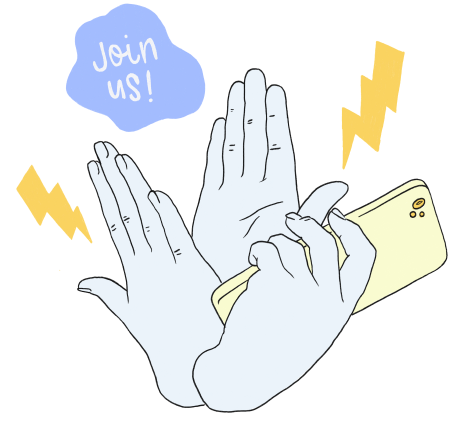
We often hear about common types of cancer, such as breast or lung cancer. However, there are rarer forms of cancer that often get overlooked, such as glioma. This article provides an overview of glioma, explaining its cause, symptoms, diagnosis, and treatment options. By understanding these aspects of this unique form of cancer, we can become better at supporting those who are affected and contribute to the current efforts to discover more effective treatment options.
What is Glioma?
A glioma is a type of tumor that originates in the glial cells, or support cells, of the brain and spinal cord. These tumors can variably affect the functioning of the nervous system, from causing no noticeable effects to becoming life-threatening.
Types of Glioma
Gliomas can be broadly categorized into low-grade gliomas (slow-growing and less aggressive) and high-grade gliomas (fast-growing and aggressive). The World Health Organization classifies gliomas based on the type of glial cell from which they originate. These include astrocytomas, oligodendrogliomas, and glioblastomas, to name a few.
Exploring the Causes and Risk Factors of Glioma
Genetic Factors
While the exact cause of glioma is still unknown, research points toward genetic factors playing a significant role. Certain inherited genetic syndromes and mutations have been associated with an increased risk of glioma.
Environmental Factors
Environmental elements such as exposure to radiation can contribute to the development of gliomas. However, the extent and significance of these risk factors are still under investigation.
Medical History
A person’s medical history can influence their risk of glioma. Those with a history of certain conditions like neurofibromatosis, tuberous sclerosis, or Li-Fraumeni syndrome have an increased risk.
Get to know us better
If you are reading this, you are in the right place – we do not care who you are and what you do, press the button and follow discussions live

Signs and Symptoms of Glioma
Physical manifestations
The physical symptoms of glioma depend mainly on the size and location of the tumor. They can include headaches, seizures, nausea, vomiting, and visual disturbances.
Cognitive and emotional signs
Gliomas can also have cognitive and emotional impacts, leading to personality changes, difficulty thinking, and mood swings.
Diagnosis: Identifying Glioma
Medical History Examination
A diagnosis usually begins with a detailed examination of the patient’s medical history, including the presence of typical symptoms and investigation for any familial history of neurological disorders.
Imaging Tests
Imaging tests such as magnetic resonance imaging (MRI) or computed tomography (CT scan) are applied next to locate any abnormal growth.
Biopsy
A biopsy, obtained either during surgery or through a less invasive needle procedure, is necessary to confirm the type and grade of the glioma.
Prognosis and Survival Rates for Glioma
Factors affecting prognosis
Factors such as the type, grade, and location of the glioma, the patient’s age, and general health status can all influence the prognosis.
Latest Statistics
While survival rates for glioma vary widely depending on these factors, the median survival rate is around 14 months for high-grade gliomas and 5-10 years for low-grade gliomas.
Current Treatments for Glioma
Surgery
Surgery is commonly the first option to treat gliomas. It involves removing as much of the tumor as possible without causing damage to normal brain tissue.
Radiation Therapy
Radiation therapy utilizes high-energy beams to kill cancer cells. It’s typically used after surgery and sometimes in combination with chemotherapy.
Chemotherapy
Chemotherapy uses drugs to kill rapidly growing cells, including cancer cells. It can be administered in different ways, including orally or through injection.
Clinical Trials
Clinical trials aiming to discover new therapies or improve existing treatments may also be an option for some glioma patients.
Living with Glioma: Self-Care and Lifestyle Changes
Physical Activity and Nutrition
Maintaining a healthy lifestyle through regular physical activity and a nutritious diet can help manage the side effects of treatment and improve overall wellbeing.
Psychological support
Psychological support, in the form of mental health professionals or support groups, is fundamental to maintaining emotional wellbeing during and after treatment.
Follow-up Care
Routine follow-up care involving physical and neurological examinations, along with regular imaging tests, is crucial in evaluating the recurrence or progression of the disease.
Conclusion
Summary of Key Points
Glioma is a distinct type of cancer with diverse manifestations and outcomes, which warrants dedicated attention. By understanding the causes, symptoms, and current treatments, better support can be provided to those affected by this disease. It’s equally important to highlight the role of a healthy lifestyle, psychological support, and frequent follow-ups in managing the condition.
Encouraging Message
Even as we emphasize the importance of understanding this disease, it’s equally vital that we cultivate hope and resilience in combating it. Each day brings us closer to advancements in science and medicine, and there’s every reason to believe in a future where glioma is not a life-threatening condition.
Frequently Asked Questions
- Is glioma a form of cancer?
Yes, glioma is a form of cancer that starts in the glial cells of the brain and spinal cord.
- What’s the difference between a malignant and benign glioma?
Benign gliomas are typically slow-growing and less likely to spread, while malignant gliomas are fast-growing, aggressive and can spread to other parts of the brain.
- Can gliomas be cured?
The potential for a cure depends on various factors, including the type, grade, and location of the glioma, but some gliomas can be effectively treated and controlled.
- How common is glioma?
Gliomas constitute about 30% of all brain and central nervous system tumors and 80% of all malignant brain tumors.
- Can children get glioma?
Yes, children can get glioma. However, it’s more common in adults, especially in older age groups.

















Comments
Thank you. Comment sent for approval.
Something is wrong, try again later